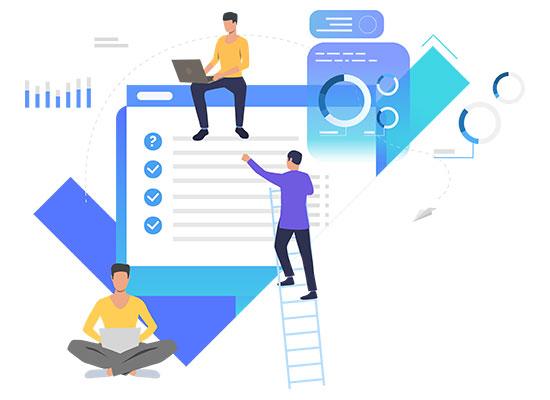Application data migration approaches
Strategic and organizational excellence differentiates winners from the rest. One of the key drivers of innovation is the adoption of modern, flexible and task-appropriate tools that enable users to unblock themselves from restrictive, slow, legacy processes and applications. Effective modern systems and processes become a force multiplier and can dramatically increase the effectiveness of individuals and teams. As such, tool modernization and migration become a critical business imperative to survive and succeed in the new digital world. But modern technology transitions are complex by their very nature. There is a wealth of institutional knowledge, wisdom and historical data stored in legacy systems. Preserving and transferring the history, linkages and context is essential for effective modernization.

- Big bang migrations – training and change management challenges
- Disruptive downtime and significant loss of productivity and business continuity
- Direct changeover/onboarding is inherently risky and difficult for teams
- Compromised data fidelity with loss of information and employee time
- Poor or lost history and cross-project traceability leads to compliance and productivity risks
- Inability to use systems for extended period
The result: There is a significant opportunity cost of migration that can set back an organization and pose competitive threats and a considerable risk of failure.
Adopting the incremental approach
Do migration projects need to adopt a ‘Big Bang’ strategy? Is it necessary to migrate all data at once considering the high risks associated with the migration? The answer lies in a lower risk, incremental, iterative and agile approach to data migration. The agile approach reduces the concerns of risks, productivity loss, business continuity by allowing teams to migrate the data in a progressive manner at a pace that is comfortable for the organization. It grants teams the ability to use both the source and target systems right up to the switchover.Migration in the new paradigm
Migration within the new paradigm:- Non-disruptive, zero downtime and no productivity loss
- Incremental migration approach phased at a pace that teams are comfortable with
- High data fidelity preserving relationships, history and content richness and linkages
- Enables users spread across source and target systems to collaborate
- Incremental team-based approach to cut over
Thereby reducing the risks and total costs of migration dramatically.
Some questions and considerations before you select your migration approach:
- Migration projects are notorious for unplanned downtime and disruption. Have you factored in the cost of disruption and downtime?
- Have you planned for downtime/disruption adequately? What if the migration takes more time than planned? Are you or your business prepared for the loss of productivity and continuity?
- The big bang approach requires all users to be migrated to the target system at the same time. Will all users be forced to migrate at the same time in one single lift and shift operation, or can teams cutover in a phased manner without losing the ability for inter-team collaboration?
- The iterative approach helps you move data in smaller increments. This presents the following questions:
- How do you ensure data operability between source and target systems until the migration is complete?
- How do you manage the migration of various components without breaking business continuity?
- Will users be able to access both source and target systems until the migration is completed and sync the changes from target to source (reverse synchronization)?
- What is the true cost of migration? Have you accounted for data transfer costs, downtime, disruption/ and information loss?
- Should the migration fail or interrupt at any point, what is the recovery or rollback mechanism you can use?